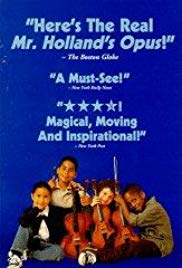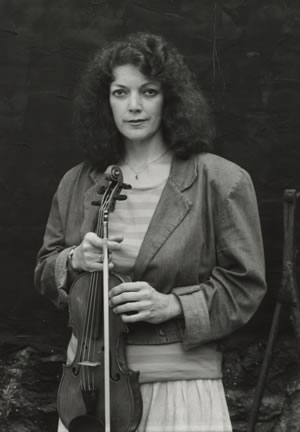Describe for your child the place of Carnegie Hall in the U.S. music world. See the Helpful Background section. Ask and help your child to answer the Quick Discussion Question appropriate for his or her age.
The film features vignettes of educators and parents talking about Ms. Guaspari’s program and arts education in general. The East Harlem Violin Program has expanded to three violin teachers and one cello instructor. Its student body is 36% African American and 60% Latino. Many of its students continue their music study in the Interschool Orchestras of New York, the Julliard School of Music Advancement Program, and the Harlem Schools for the Arts. In addition to Carnegie Hall, the students from this program have performed at the White House, the Kennedy Center, in Germany, Switzerland, and many other locations. Demand for the program still exceeds the space available and the lottery is still used to select students. 50% of the applicants are turned away.
What began as an effort to protect the job of an innovative and inspiring teacher is now a nonprofit organization with broader goals. Opus 118 – We Want Music! has plans that include promoting outstanding teaching efforts in other New York City schools, offering after school and weekend lessons to dedicated students, and a concert series to expose students to great musical performers. Its “Outstanding String Teachers Initiative” seeks to train music teachers in the group teaching methodology pioneered by Roberta Guaspari, along with developing skills in program development, community-parent organization, relations with elected officials, and public-private interaction. Opus 118 – We Want Music! has proposed several other initiatives designed to promote music education nationally.
Roberta Guaspari studied violin in the public schools and went on to major in Music Education in college. She holds a Masters Degree in Music Education from Boston University. She is now Artistic Director of Opus 118 – We Want Music!
New York City’s Carnegie Hall is acclaimed as the world’s most prestigious concert hall. “Its walls have echoed with applause for the world’s outstanding classical artists, as they have for the greatest popular musicians of our time and for the many prominent dancers, politicians, authors, and crusaders who have appeared on its stage.” Financed by industrial tycoon Andrew Carnegie, who foresaw its great legacy, Carnegie Hall was completed in 1891. It is “an embodiment of the aspirations of all those who have striven, on both sides of the footlights, to sustain our musical culture and convey it to future generations.” A performance at Carnegie Hall is considered the high point of a concert artist’s career. For more on Carnegie Hall, see The Carnegie Hall Website.



